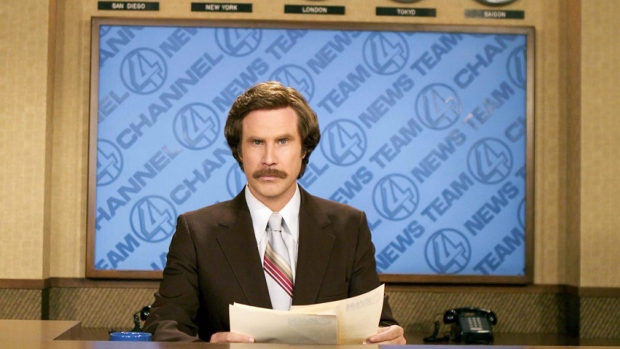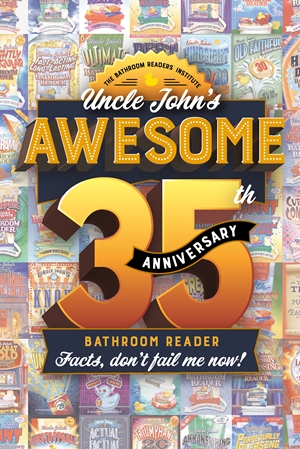To mark the release of Anchorman 2, here is a look back at famous anchormen and their signature “sign-off.” You stay classy, BRI fans.
Want more fun factoids? Try this book!
“Good night, and good luck.” Possibly the most famous sign-off in TV history, this phrase was coined by 1950s CBS News personality Edward R. Murrow (Person to Person, See It Now). He had gotten his start on CBS Radio during World War II, broadcasting from the rooftops of London buildings during the German blitz. With the line, Murrow was earnestly reaching out to the audience in an attempt to provide comfort. He kept the line after the war.
“See you on the radio.” CBS Sunday Morning anchor Charles Osgood got his start in radio, and for a while he juggled careers in both radio and TV news. His parting words on his TV appearances became “See you on the radio,” and he kept the sign-off even after he had completely left radio.
“Good night, Chet.” “Good night, David.” When Chet Huntley and David Brinkley hosted The Huntley-Brinkley Report on NBC from 1956 to 1970, they weren’t even in the same room, let alone the same city. Brinkley broadcast from Washington, D.C., and Huntley from New York. Rarely did they actually speak to each other during the news broadcast, but they always ended the show with this tagline.
“And so it goes.” Lloyd Dobyns coined the phrase (based on the line “So it goes!” from Kurt Vonnegut’s Slaughterhouse-Five), but Linda Ellerbee popularized it when she succeeded Dobyns as the host of several NBC late-night news shows in the late 1970s and early ’80s. The line was later used by fictional reporter Murphy Brown (Candice Bergen) on Murphy Brown (1988–98). Ellerbee guest-starred on an episode and argued with Brown over who originated the phrase.
“Good night, and good news.” Okay, it’s not a real news anchor’s sign-off. It was used by Ted Baxter, the fictional Minneapolis anchorman played by Ted Knight on The Mary Tyler Moore Show (1970–77). It’s a parody of and homage to Murrow.
“And that’s the way it is.” CBS Evening News anchor Walter Cronkite never intended for this sign-off to become his signature line repeated nightly for decades. When he began anchoring the news in 1962, he’d planned to end each broadcast with a human interest story, followed by a brief off-the-cuff commentary or final thought. But producers told him there wouldn’t be enough time to do all that, so he quickly came up with “And that’s the way it is.” Years later, he still thought it sounded “too authoritative.”
“And that’s a part of our world.” Dan Rather took over for Cronkite in 1981, and by 1986 he was itching to create a tagline as memorable as Cronkite’s. Without telling producers, he started using one he’d come up with. At the end of a broadcast in September 1986, he said just one word: “Courage.” Two days later, following a story about Mexico, Rather said “Corajé” (Spanish for “courage”). It didn’t work out; shortly thereafter, Rather switched to the modest “And that’s a part of our world.”
“We’re in touch, so you be in touch.” Hugh Downs, and later Barbara Walters, uttered this line at the end of ABC’s newsmagazine 20/20. Although Downs doesn’t recall exactly why he started using the phrase, he has said it was probably a subtle request for viewer mail.
“If it’s Sunday, it’s Meet the Press.” The late Tim Russert’s closing phrase as host of the Sunday morning political discussion show Meet the Press sounded more like an introduction…for a show that had just ended. When interim host Tom Brokaw stepped in to host after Russert died in 2009, he kept Russert’s line as a tribute.
Originally published in Uncle John’s Bathroom Reader Tunes into TV.









